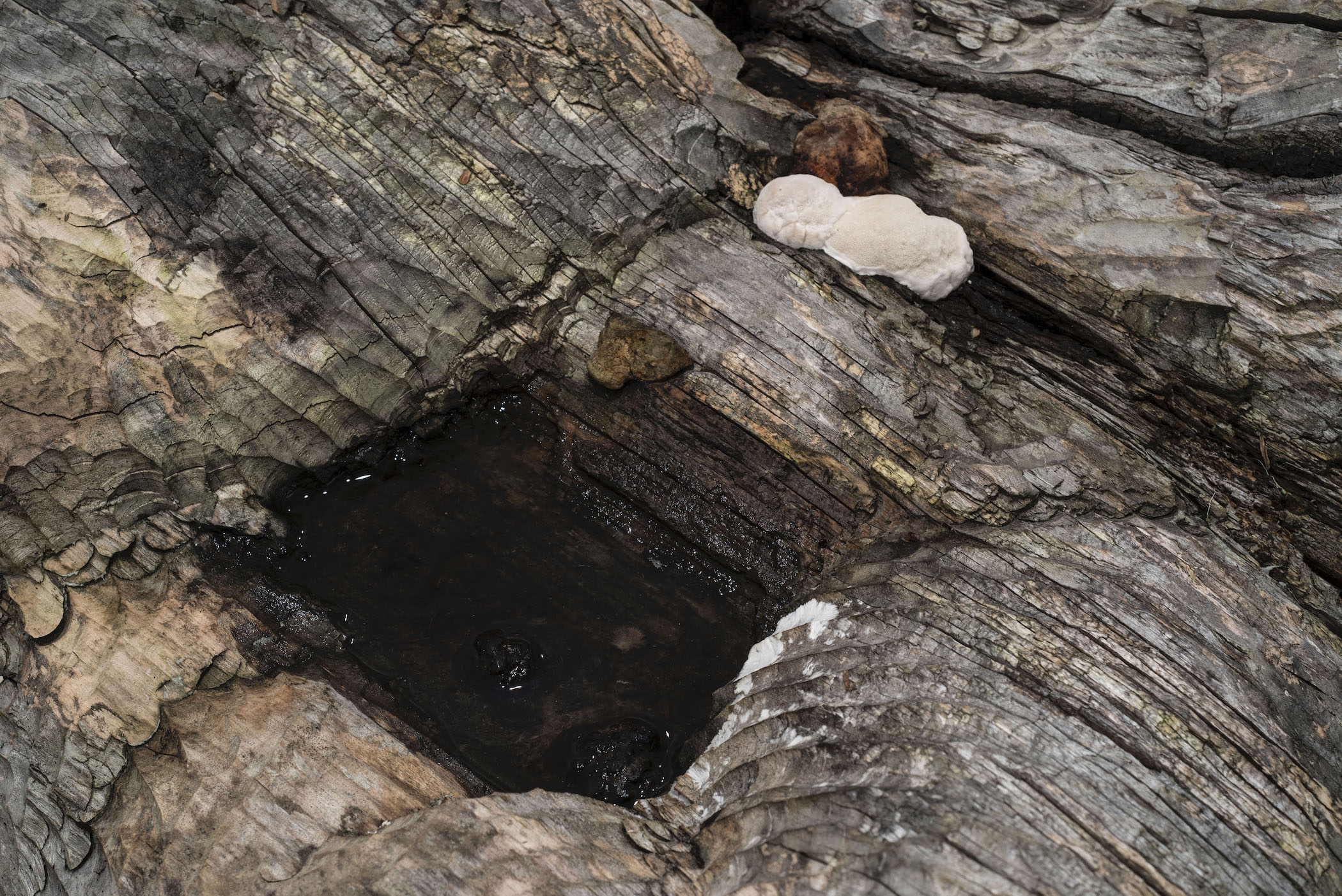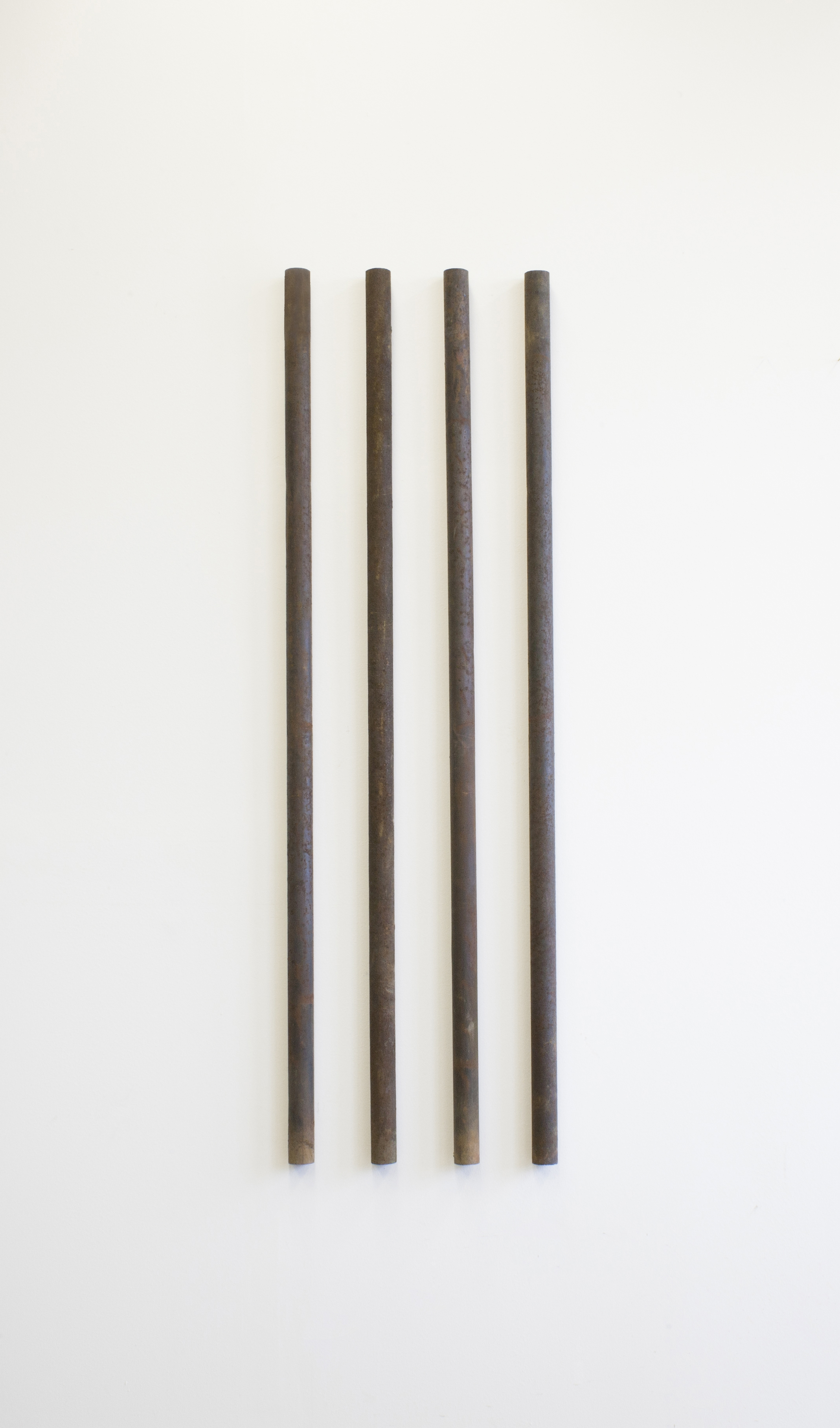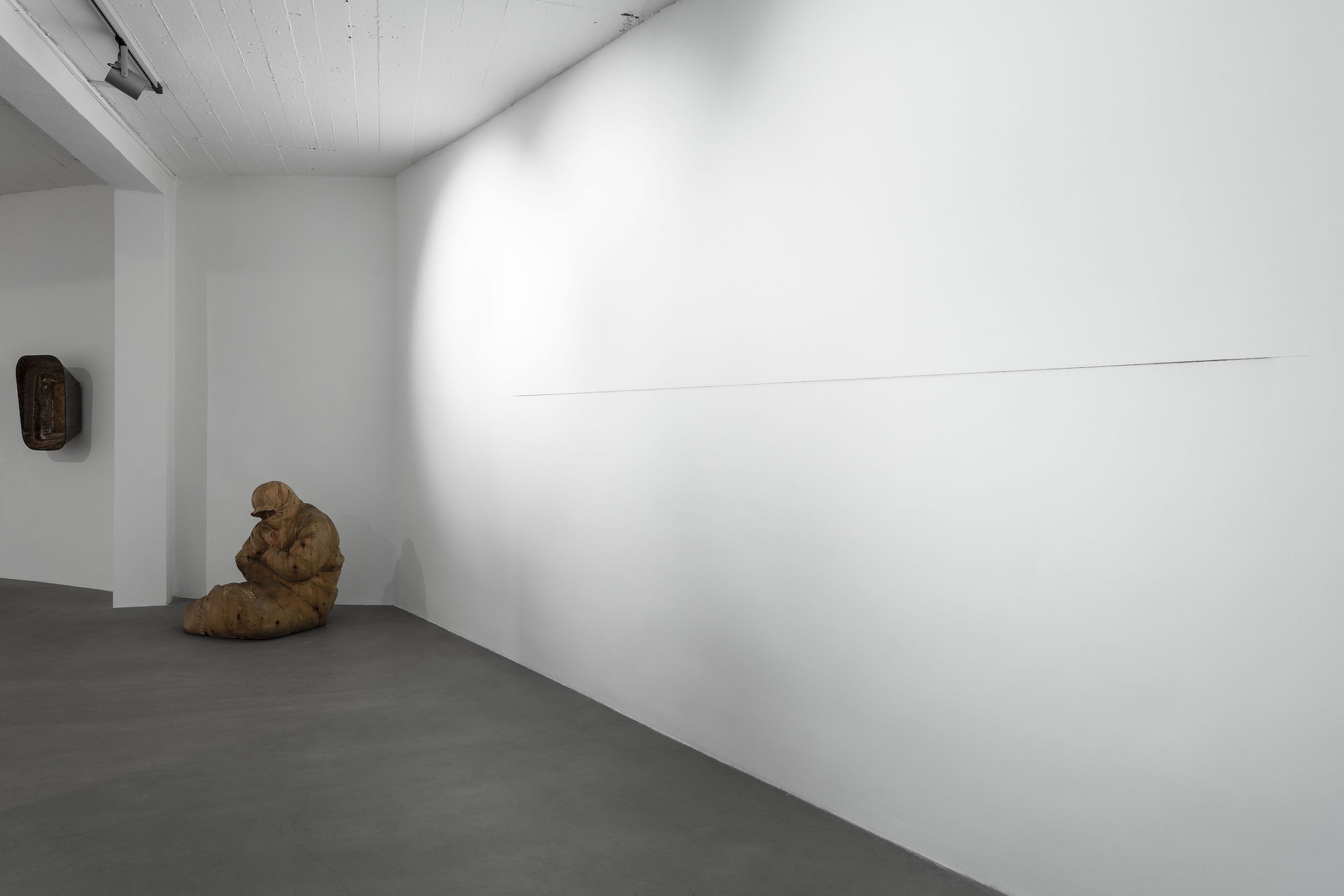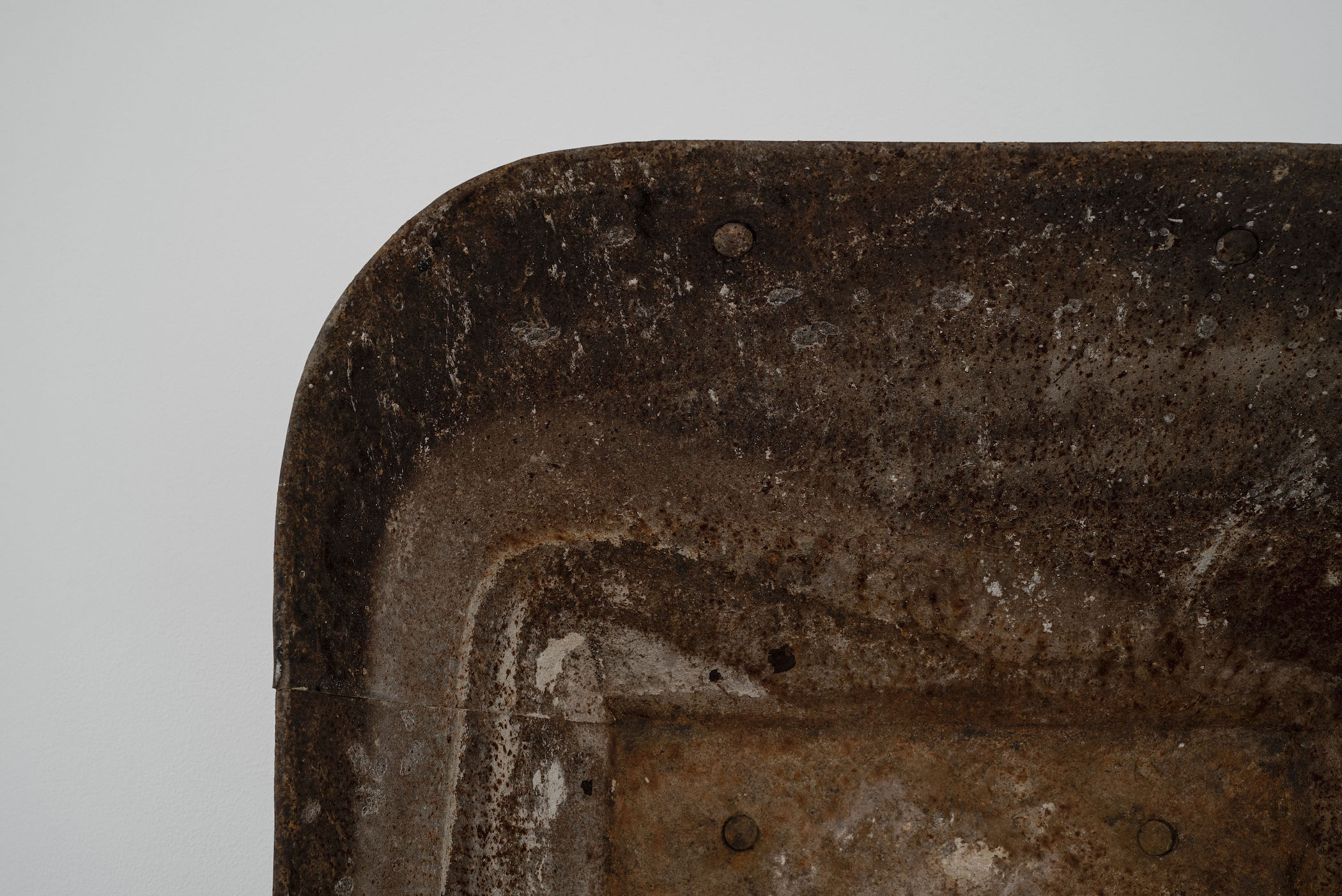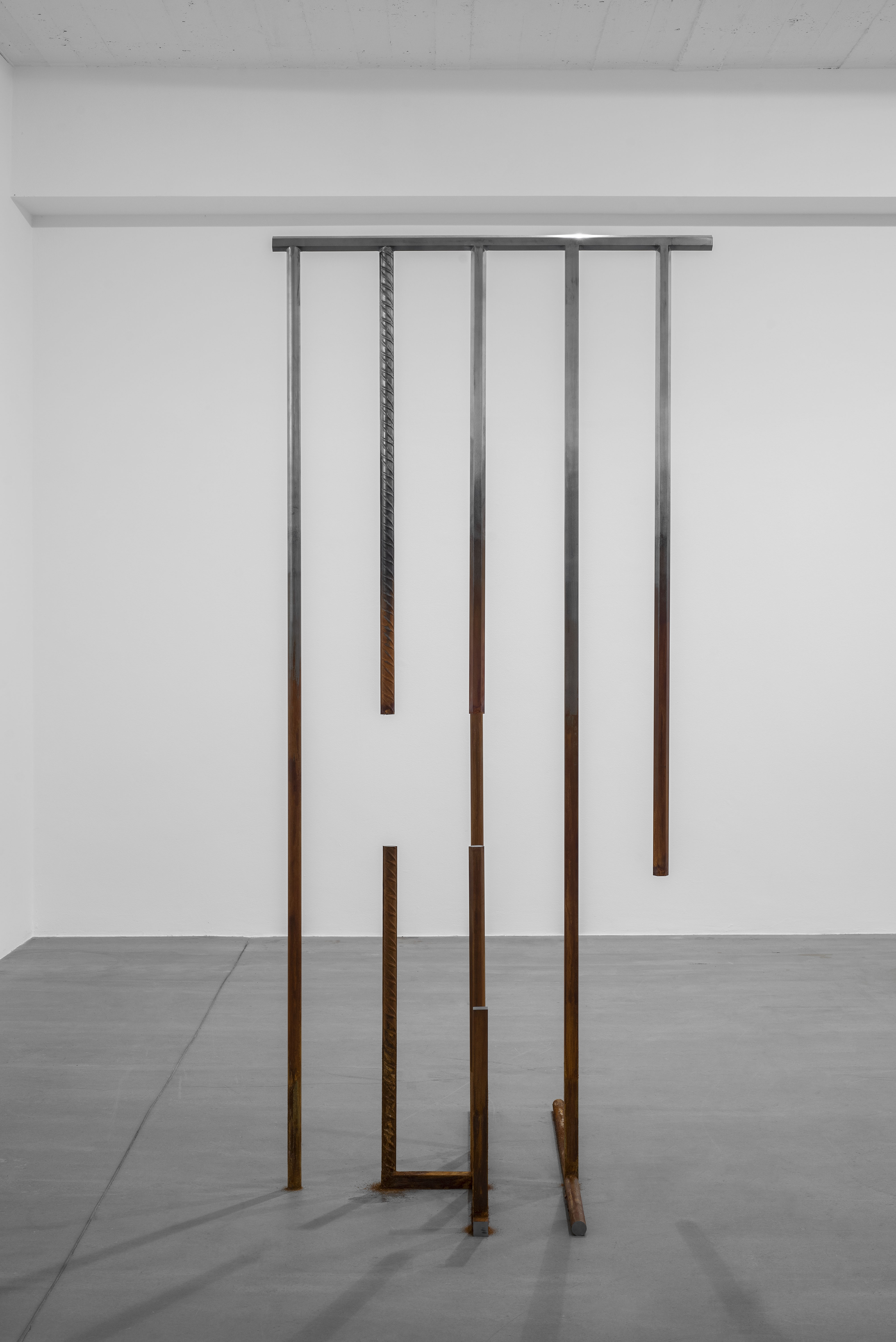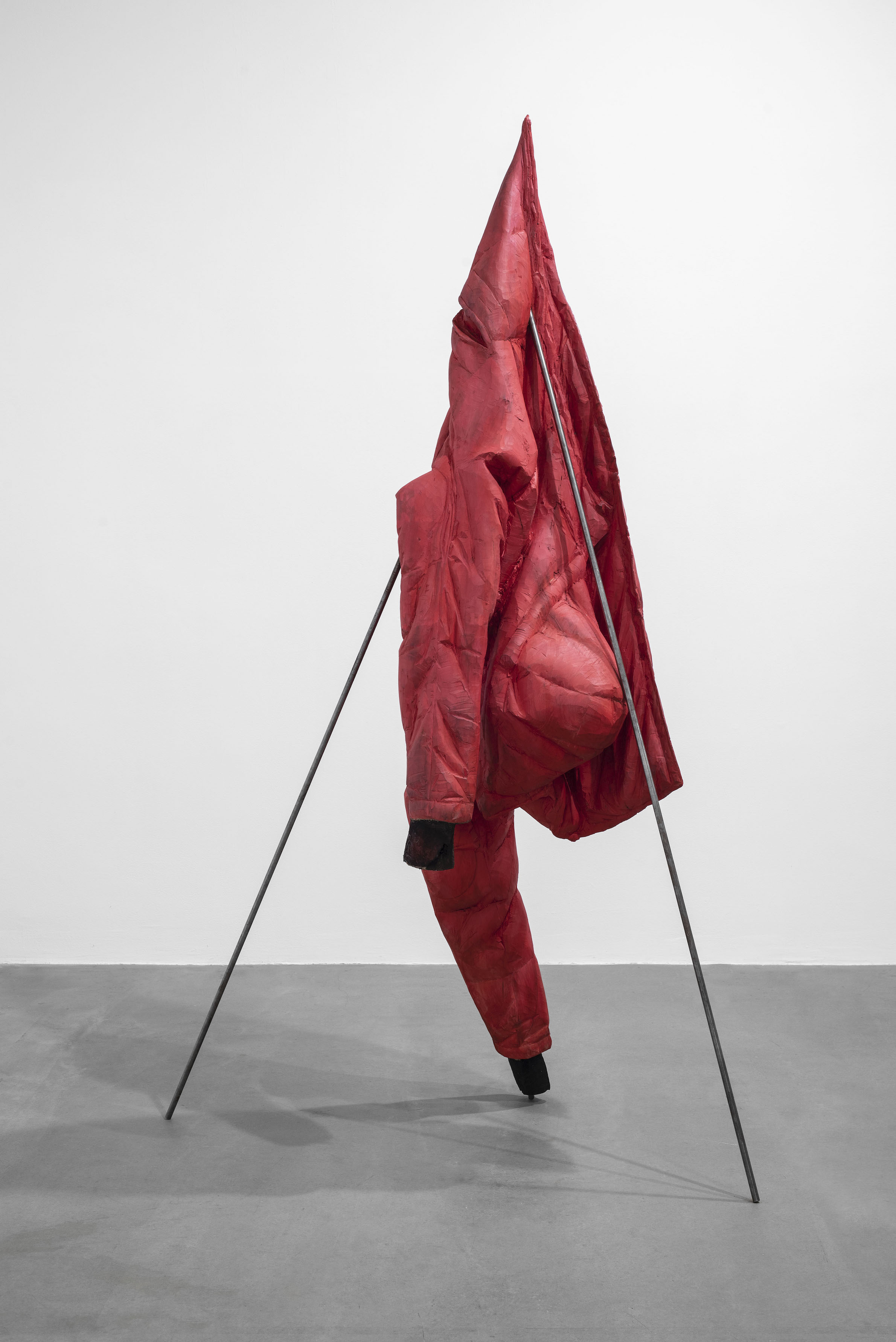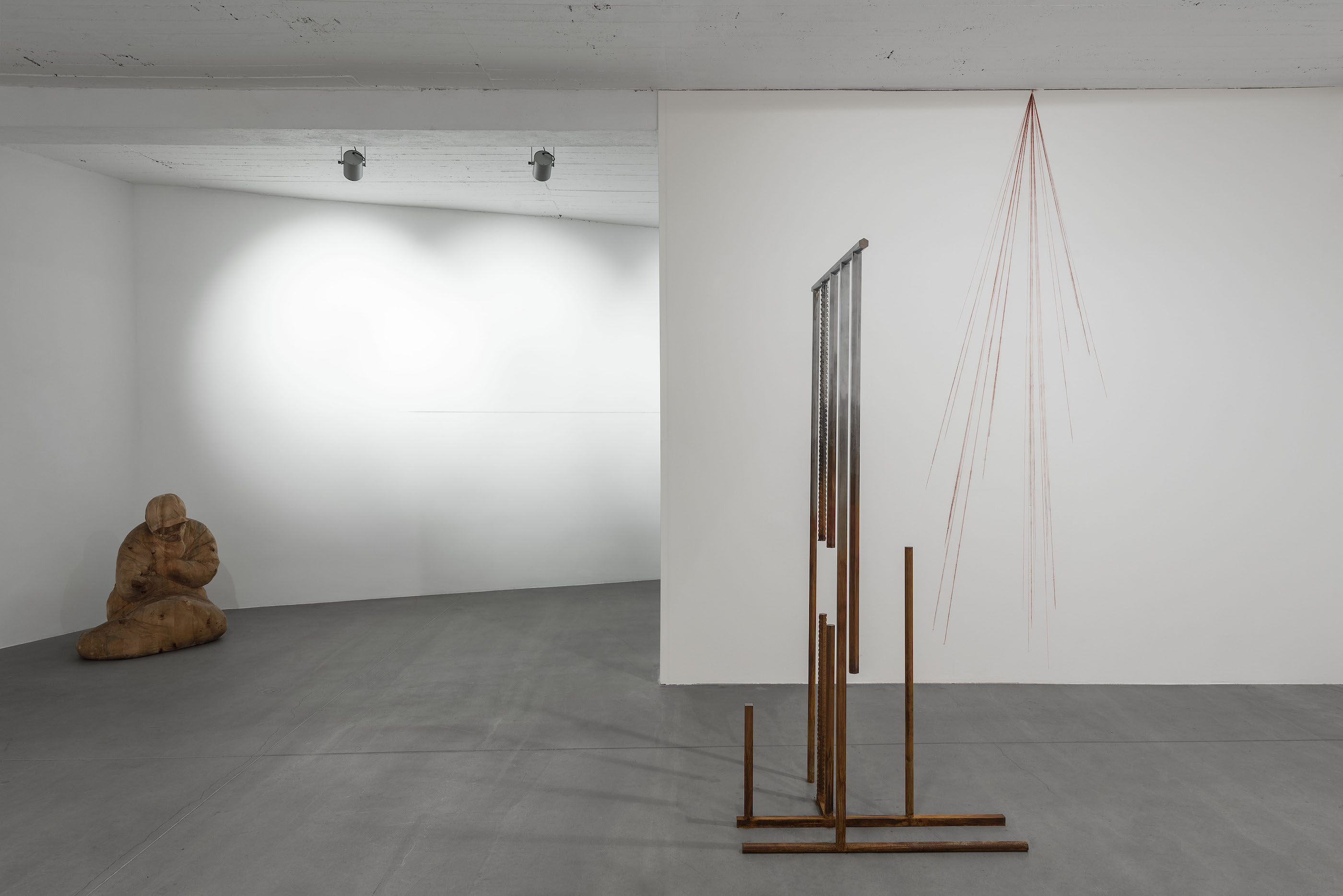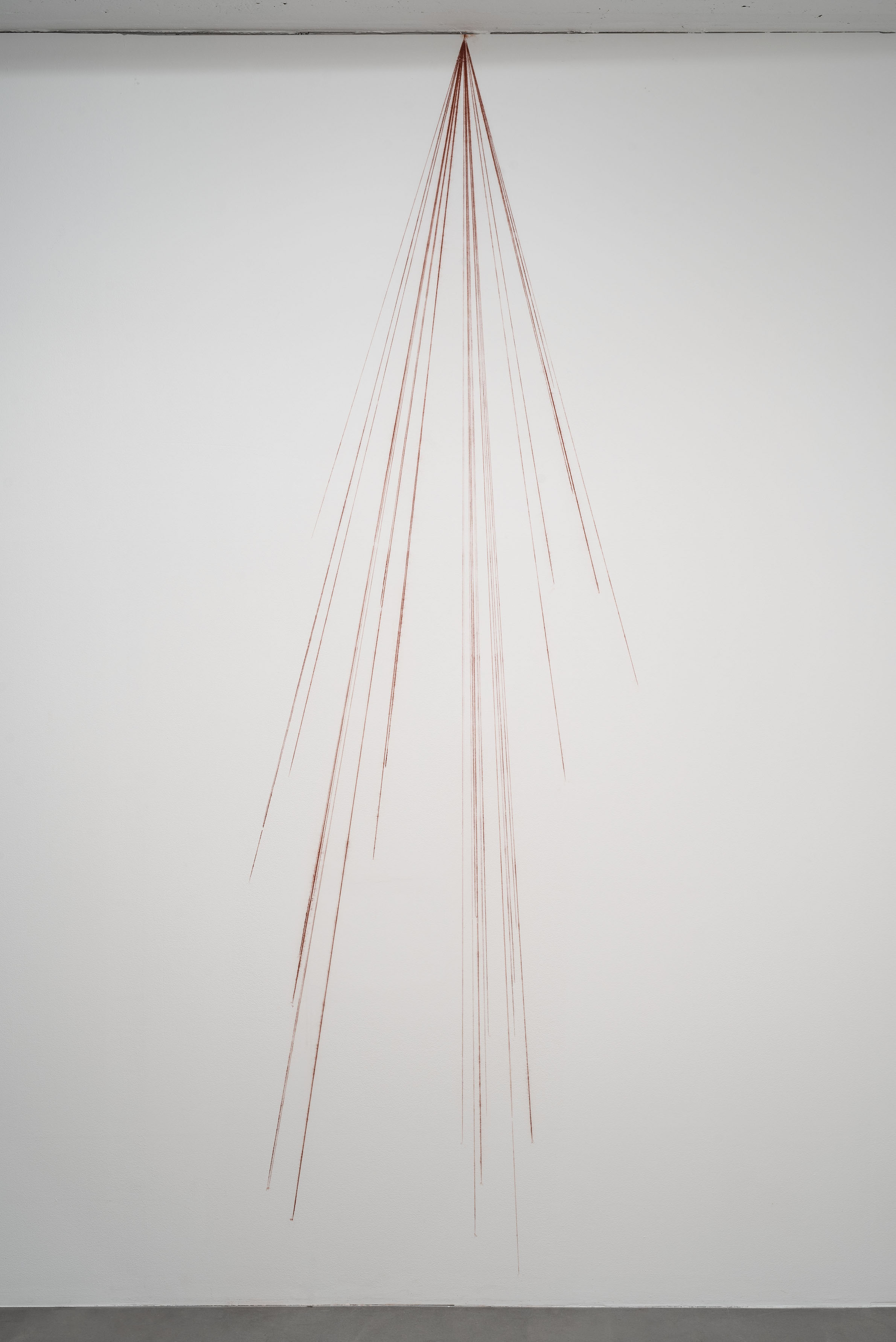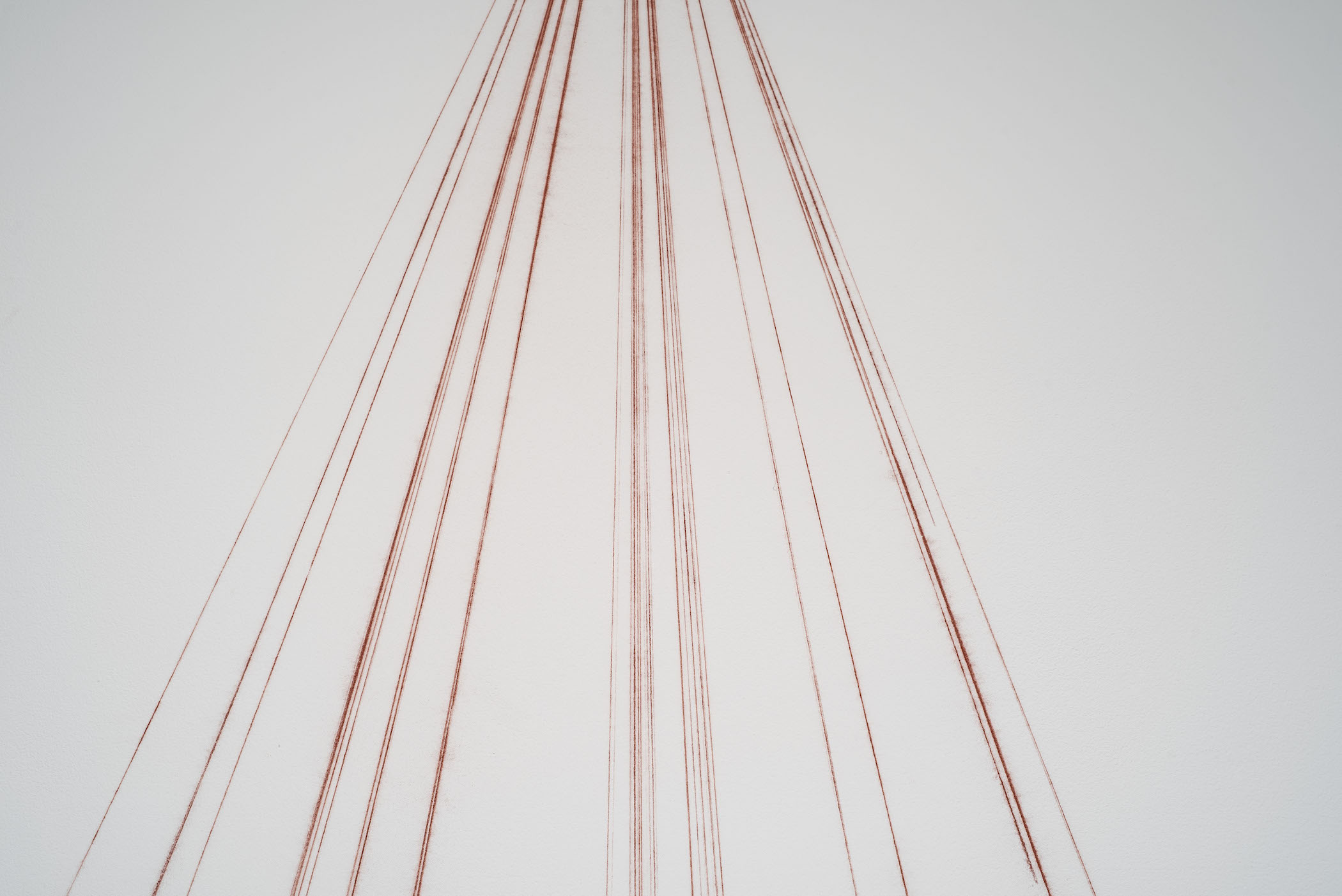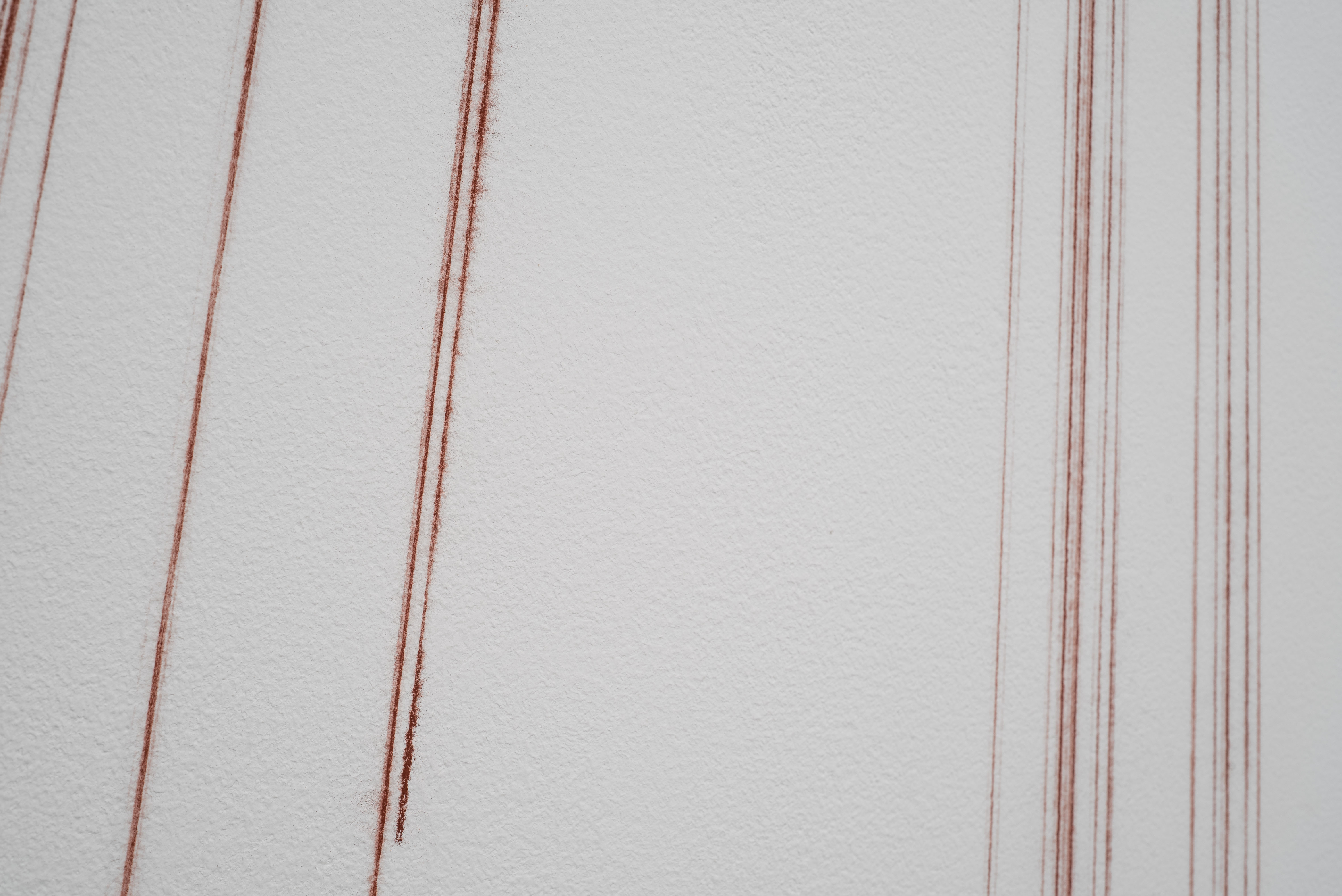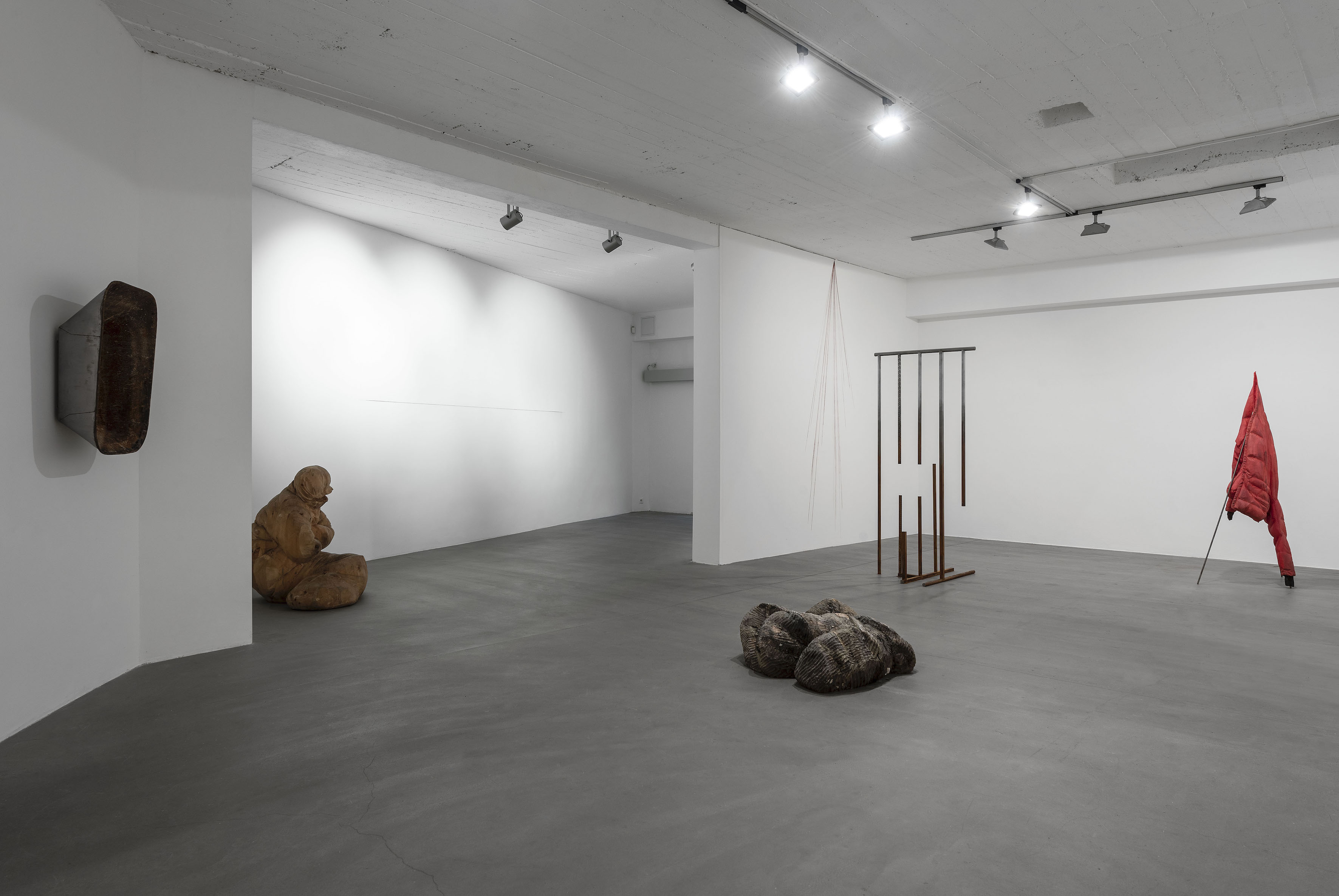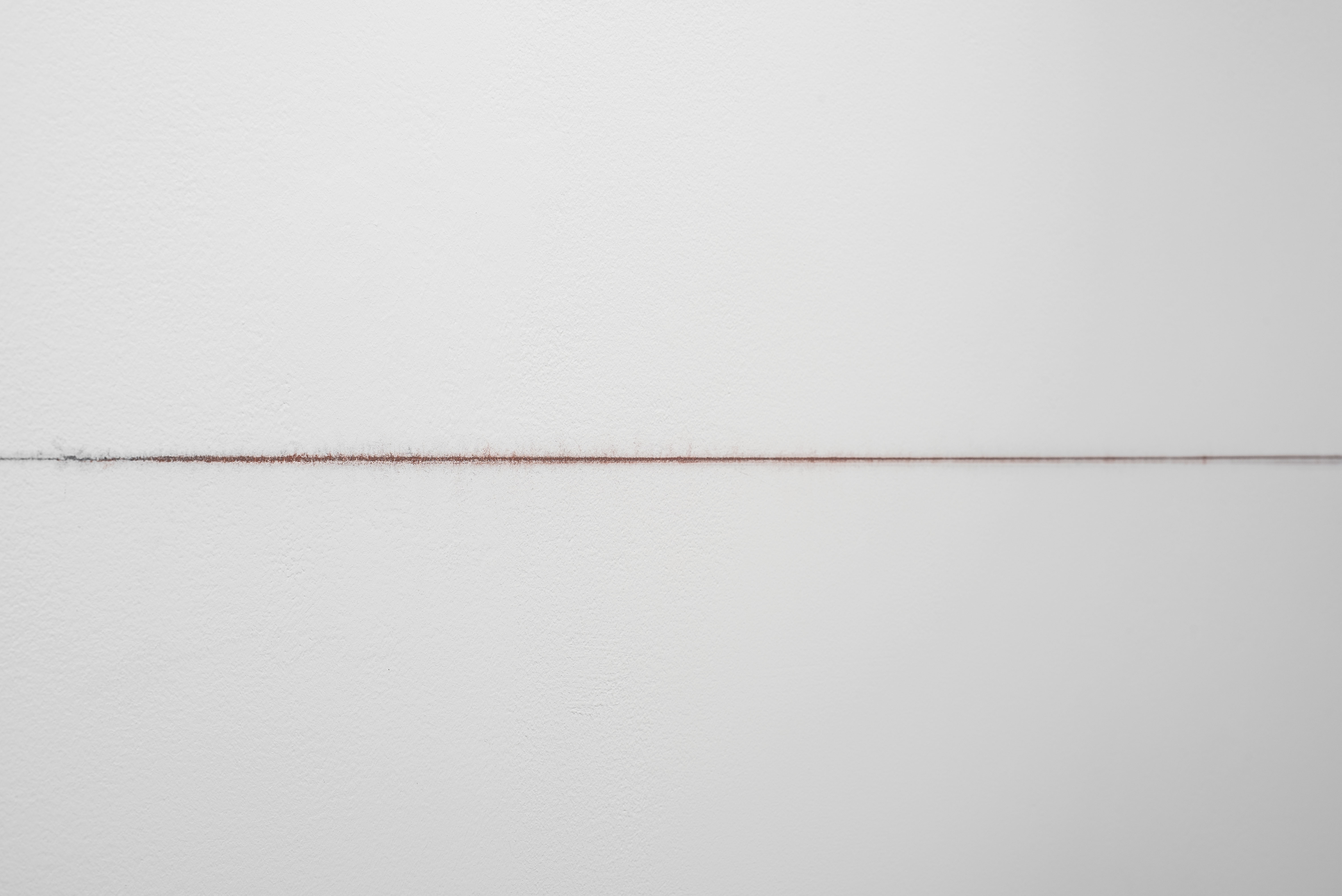Artist: Štefan Papčo
Title: Verticality as Fantastic Occupation
Venue: Zahorian & Van Espen Bratislava
Curator: Elena Sorokina
Photo: Marko Horban

Mountaineering was often described as an adventure into a new vertical world. Indeed, the naked eye perceives mountains in the distance as a vertical plane, an absolute verticality crowned with rocky or snowy peaks. The charm of this hypnotic elevation was often enhanced and exaggerated in countless period sketches and drawings, featuring spectacular slopes. (Foreshortening—one of linear perspective’s most important techniques —was invaluable, as it made almost any slope look steep.)
This kind of “painters’ verticality” was, of course, a pure optical illusion. It was perspective that played tricks on those who gazed at the mountains. As scientists had demonstrated in the early nineteenth century, very few peaks in Europe came anywhere close to actual vertical planes and 90-degree elevations. Already by the end of the nineteenth century, climbing as “the conquest of verticality” was considered an anachronism. “Verticality” was acknowledged as a fiction, a literary exaggeration and part of the mountains’ modern myth.
In this context, climbers, with their own perspective on the issue, have always known better. The art of climbing is founded on, among other things, avoiding the extreme terrain and finding a route that circumvents the vertical. Unlike the painter’s linear perspective, or the troubled gaze of the observer, the climber’s perspective is neither an optical device nor pure vision. When you climb, sight loses its sensory primacy. Climbing is not about visual paradigms; it is performative, and deeply grounded in the body, movement, and gravity.
Štefan Papčo’s work is situated in such perspective, one of body and gravity, movement and perception. He belongs to a generation that understands what “verticality” stands for instead today rather in Hito Steyerl’s sense.[1] In her ground-breaking reflection on “vertical perspective,” which has replaced the horizontal perspective of what we call early modernity, Steyerl reflects on what verticality has become: a dominant visual paradigm, an emblem of an oppressive system. Following Steyerl’s thinking, Papčo is suspicious of today’s vertical visuality, and his work traces it back to its origins, to the “modern obsession” it once was, and simultaneously questions it. Rooted in the cultures and techniques of climbing, his practice uses their body-based strategies; from the pool of performative modernities described in Hansen’s book, he recovers apocryphal elements and different ideas of verticality. Notable among these is his adoption of the way mountaineers perceive the vertical. This “climbers’ verticality” that Papčo activates in his work is contradictory, unstable, and performative. It rejects the god’s-eye perspective and opts for an individually lived experience of the “vertical” and its discontents.
[1] Hito Steyerl, In Free Fall: A Thought Experiment on Vertical Perspective. E-flux Journal #24 – April 2011.
